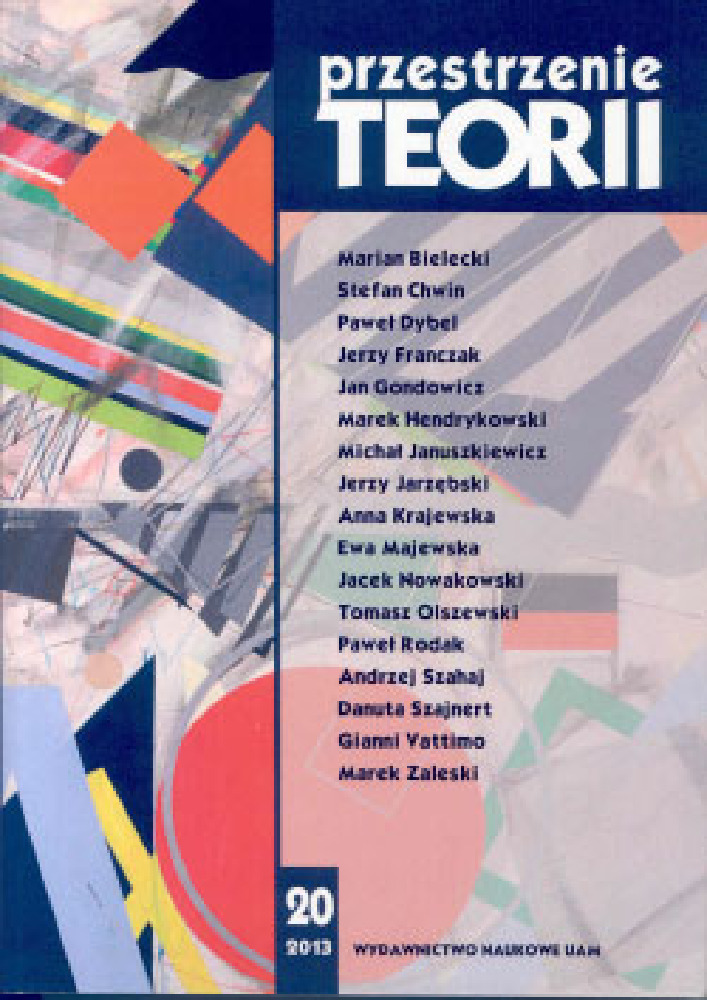Abstrakt
Film adaptation is carried out by means of montage. This process is based on adjusting the obtained material and piecing together fragments which will be used once again and which an adapter has taken from the original work. It is montage, i.e. a selection and combination of moving pictures, which constitutes a new textual whole which is equivalent to the prototype, that forms a semiotic basis for and the essence of the adaptation process. The term “translation” can only be used in reference to film adaptation when we do not deal with full identicalness, but rather with functional similarity which does not allow one to fully equate a linguistic translation with screen adaptation.Bibliografia
M. Hopfinger, W laboratorium sztuki XX wieku. O roli słowa i obrazu, Warszawa 1993.
M. Hopfinger, Kultura audiowizualna u progu XXI wieku, Warszawa 1997.
Doświadczenia audiowizualne. O mediach w kulturze współczesnej, Warszawa 2003.
Literatura i media po 1989 roku, Warszawa 2010.
J.S. Stawiński, Godzina „W”, Węgrzy, Kanał, Warszawa 1956.
M. Hendrykowski, Przekaz filmowy a język filmu, [w:] tenże, Język ruchomych obrazów, Poznań 1999.
Licencja
Autorzy
Autorzy tekstów przyjętych do publikacji w czasopiśmie „Przestrzeniach Teorii” są zobowiązani do wypełnienia, podpisania i odesłania na adres redakcji umowy o udzielenie nieodpłatnej licencji do utworów, z zobowiązaniem do udzielania sublicencji CC.
Zgodnie z umową, autorzy tekstów opublikowanych w czasopiśmie „Przestrzeniach Teorii” udzielają Uniwersytetowi im. Adama Mickiewicza w Poznaniu niewyłącznej i nieodpłatnej licencji oraz zezwalą na użycie sublicencji Creative Commons Attribution-NonCommercial-NoDerivatives 4.0 International (CC BY-NC-ND 4.0).
Autorzy zachowują prawa do dalszego, swobodnego rozporządzania utworem.
Autorzy, którzy wykorzystują w swoim tekście cudze utwory (np. ilustracje, fotografie) proszeni są o dostarczenie do redakcji czasopisma zgodę na publikację od uprawnionych podmiotów.
Użytkownicy
Zainteresowani użytkownicy internetu uprawnieni są do korzystania z utworów opublikowanych po 2015 roku „Przestrzeniach Teorii” tylko w calach niekomercyjnych, pod następującymi warunkami:
- uznanie autorstwa - obowiązek podania wraz z rozpowszechnionym utworem, informacji, o autorstwie, tytule, źródle (odnośniki do oryginalnego utworu, DOI) oraz samej licencji;
- bez tworzenia utworów zależnych - utwór musi być zachowany w oryginalnej postaci, nie można bez zgody twórcy rozpowszechniać np. tłumaczeń, opracowań.
Do wszystkich tekstów opublikowanych przed 2015 r. prawa autorskie są zastrzeżone.
Inne
Uniwersytet im. Adama Mickiewicza w Poznaniu zachowuje prawo do czasopisma jako całości (układ, forma graficzna, tytuł, projekt okładki, logo itp.).
